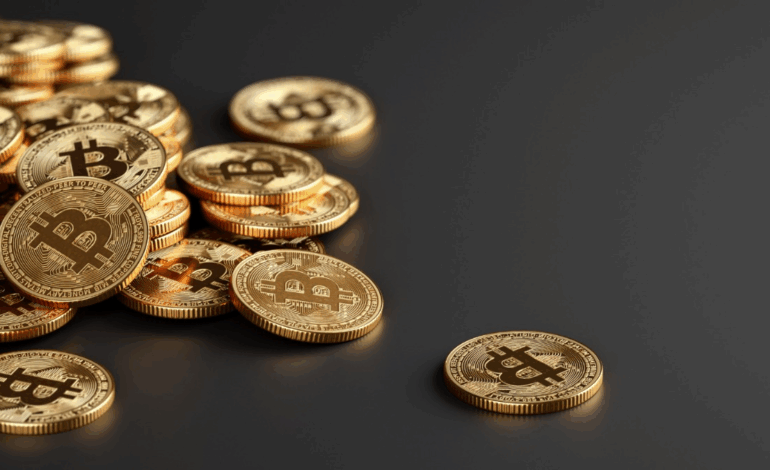Tokenization in Plain Kenyan

You know those simple english terms that everyone using, it sounds obvious, you’ve used it a couple of times yourself, but if someone told you to define it, not even chat gpt could save you, for me, that is tokenization.
Tokenization turns real-world assets into digital tokens on a blockchain, promising liquidity, transparency, accessibility, security, and efficiency. But some big questions remain: Does the issuer actually own the asset? What happens if they lose majority control, or if token prices sky rocket or plummet far beyond the asset’s real value? After all, no one is going to pay a million for a coffee tree, and no sane person is going to sell their land for a dollar just because some numbers on a screen told him to.

How I understand it
Think of tokenization as putting the rights to something you already understand: shares, a rental flat, a coffee harvest, a T-bill, put into a programmable wrapper that lives on a blockchain. The wrapper (a token) can move 24/7, split cleanly into tiny pieces, settle instantly, and run rules you pre-bake (who can buy, when dividends pay, how redemptions work). None of that changes what the asset is. It only changes how we hold, transfer, and administer its rights.
The key is the link between the on-chain token and the off-chain reality. If that link is tight and enforceable, the token behaves like the asset. If it’s loose, you’re holding a synthetic that only tracks the asset’s price—until it doesn’t.
Do you have to own the asset 1:1?
Usually yes. If you are promising ownership or redemption.
Here are the common designs you’ll see :
1.Fully-backed, redeemable (custody + SPV/Trust + ERC-20): an issuer holds the asset in regulated custody, issues tokens 1:1, and lets holders redeem for the asset or cash at Net Asset Value (NAV). Because you can redeem, arbitrage keeps token price glued to the real thing.
2.Shares/units of a fund (collective investment scheme/ETF-like): a licensed manager holds a basket (e.g., 25 NSE stocks). Tokens are simply the fund’s register of holders. Subscriptions/redemptions happen at NAV; trading between investors can happen P2P 24/7.
3.Revenue-share claims (e.g., individual coffee trees): tokens don’t grant land title; they grant a contractual right to a share of future proceeds. No 1:1 “ownership” of a tree; you own a slice of outputs and business cash flow under a legally binding contract.
4. Pure synthetics (price-tracking only): no backing, no redemption. These are derivatives—great for access, but they live or die on the issuer’s risk controls.
What Makes Tokenization Work
Behind the slick interface, there’s heavy plumbing:
- Redemption mechanisms → The safety net ensuring token and asset prices don’t drift apart.
- Legal wrapper → An SPV, trust, or licensed fund defines exactly what each token represents.
- A Regulated custody → Assets must sit with a trusted custodian (CDSC for equities, land registry for title, warehouse receipts for commodities).
- Oracles & NAVs → Reliable price data flows on-chain to anchor valuations.
- Compliance in code → KYC/AML, investor eligibility, caps, and geo-fencing are baked into smart contracts.
Tokenizing the NSE
Its been done before. In October 2024, the Nairobi Securities Exchange (NSE) joined the Hedera Governing Council to explore tokenization. A practical path today might look like this:
- Price link: Primary mint/redeem keeps token prices glued to NAV. CMA-approved KYC gates ensure compliance.
- Investors buy: On-chain tokens representing units in a licensed fund tracking NSE equities.
- Fund holds: Actual NSE-listed shares in custody, with dividends and splits passed through.
The State of Regulation in Kenya Right Now & Should You Invest?
The NSE–Hedera link is official, positioning the bourse to support tokenized securities over time. That’s policy-direction, not a blanket “it’s all live” announcement.
The CMA Sandbox is active and has green-lit tokenization pilots like Yeshara Tokens for a one-year trial. Good sign for RWA done properly.
The Virtual Asset Service Providers (VASP) Bill, 2025 is before Parliament; Second Reading commenced June 24, 2025. It clarifies licensing for exchanges, custodians, and (importantly) who can issue/operate tokenized products. As of today, it is not yet law—but momentum is real.
So… invest now or wait?
It depends on your risk appetite. A Conservative investor should wait until the VASP Bill is law and NSE/CMA-approved products are live. But you’re not a conservative investor, are you? Feel free to experiment with small allocations but only if the structure has real guardrails:
- Licensed fund/custodian
- Clear legal wrapper
- Explicit redemption rights
- Audited NAVs
- CMA sandbox approval
If those aren’t there, you’re probably buying a lie. Thanks for reading!























